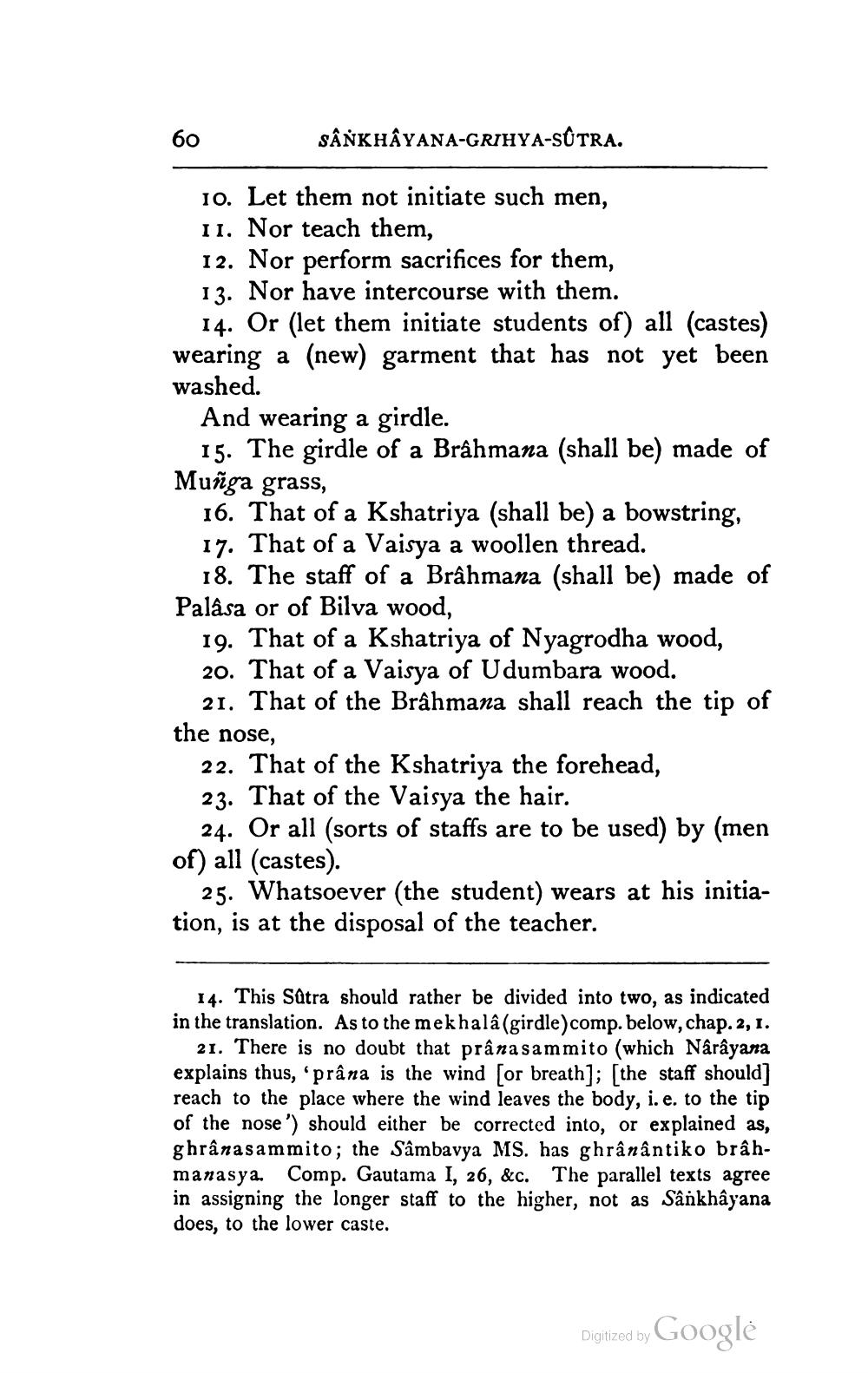________________
SANKHÂYANA-GRIHYA-SÛTRA.
10. Let them not initiate such men, II. Nor teach them,
12. Nor perform sacrifices for them, 13. Nor have intercourse with them.
60
14. Or (let them initiate students of) all (castes) wearing a (new) garment that has not yet been washed.
And wearing a girdle.
15. The girdle of a Brahmana (shall be) made of Munga grass,
16. That of a Kshatriya (shall be) a bowstring, 17. That of a Vaisya a woollen thread.
18. The staff of a Brâhmana (shall be) made of Palâsa or of Bilva wood,
19. That of a Kshatriya of Nyagrodha wood,
20. That of a Vaisya of Udumbara wood.
21. That of the Brahmana shall reach the tip of the nose,
22. That of the Kshatriya the forehead,
23. That of the Vaisya the hair.
24. Or all (sorts of staffs are to be used) by (men of) all (castes).
25. Whatsoever (the student) wears at his initiation, is at the disposal of the teacher.
14. This Sutra should rather be divided into two, as indicated in the translation. As to the mekhalâ (girdle) comp. below, chap. 2, 1.
21. There is no doubt that prâna sammito (which Nârâyana explains thus, 'prâna is the wind [or breath]; [the staff should] reach to the place where the wind leaves the body, i. e. to the tip of the nose') should either be corrected into, or explained as, ghrânasammito; the Sâmbavya MS. has ghrânântiko brâhmanasya. Comp. Gautama I, 26, &c. The parallel texts agree in assigning the longer staff to the higher, not as Sânkhâyana does, to the lower caste.
Digitized by Google




